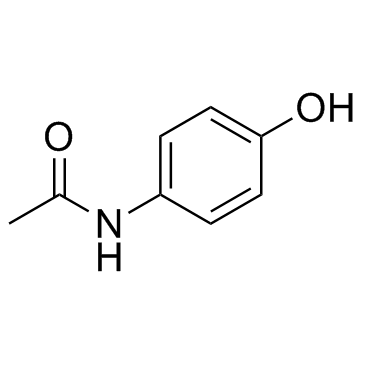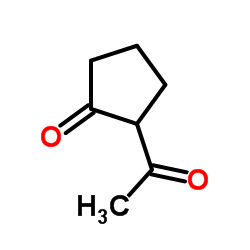Protective properties of 2-acetylcyclopentanone in a mouse model of acetaminophen hepatotoxicity.
Lihai Zhang, Terrence Gavin, Brian C Geohagen, Qiang Liu, Katherine J Downey, Richard M LoPachin
文献索引:J. Pharmacol. Exp. Ther. 346(2) , 259-69, (2013)
全文:HTML全文
摘要
Our previous research showed that enolates formed from 1,3-dicarbonyl compounds, such as 2-acetylcyclopentanone (2-ACP), could provide protection in cell culture models from electrophile- or oxidative stress-induced toxicity. In the present study, we evaluated the protective abilities of 2-ACP in a mouse model of acetaminophen (APAP) hepatotoxicity. Results show that oral APAP overdose (500 mg/kg) was nearly 90% lethal within 72 hours and that the resulting hepatotoxicity was associated with substantial changes in plasma liver enzyme activities, histopathological indices, and markers of hepatocyte oxidative stress. 2-ACP administered intraperitoneally 20 minutes before APAP completely prevented lethality over a 7-day observation period. This effect was dose-dependent (0.80-2.40 mmol/kg) and was correlated with normalization of measured parameters. Nearly complete protection was afforded when 2-ACP was administered 20 minutes post-APAP, but not 60 minutes after intoxication. Although intraperitoneal administration of N-acetylcysteine (NAC) was not effective over a broad dose range (2.40-7.20 mmol/kg), temporal studies indicated that intraperitoneal NAC was hepatoprotective when injected 60 minutes after APAP intoxication. Because of a loss of function in stomach acid, oral administration of 2-ACP was associated with modest APAP protection. In contrast, NAC administered orally provided dose-dependent (0.80-2.40 mmol/kg) protection against APAP hepatotoxicity. In chemico studies and quantum mechanical calculations indicated that 2-ACP acted as a surrogate nucleophilic target for the reactive electrophilic APAP metabolite N-acetyl-p-benzoquinone imine. Our findings suggest that 2-ACP or a derivative might be useful in treating acquired toxicities associated with electrophilic drugs and metabolites or environmental toxicants.
相关化合物
| 结构式 | 名称/CAS号 | 分子式 | 全部文献 |
|---|---|---|---|
 |
对乙酰氨基苯酚
CAS:103-90-2 |
C8H9NO2 | |
 |
2-乙酰环戊酮
CAS:1670-46-8 |
C7H10O2 |
|
Characterization of a highly sensitive and selective novel t...
2015-01-01 [J. Pharmacol. Toxicol. Methods 76 , 83-95, (2015)] |
|
Application of IL-36 receptor antagonist weakens CCL20 expre...
2015-01-01 [Sci. Rep. 5 , 8521, (2015)] |
|
Simple and reliable HPLC method for the monitoring of methot...
2014-08-01 [J. Chromatogr. Sci. 52(7) , 590-5, (2014)] |
|
Cheminformatics analysis of assertions mined from literature...
2010-01-01 [Chem. Res. Toxicol. 23 , 171-83, (2010)] |
|
Translating clinical findings into knowledge in drug safety ...
2011-12-01 [J. Sci. Ind. Res. 65(10) , 808, (2006)] |